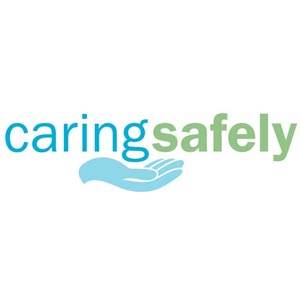In 2014, the UHN's Community Mental Health Program at Toronto Western Hospital (TWH) was looking to improve communication for patient transfers.
Clinical staff noticed that when ill outpatients required transfer to the Psychiatric Emergency Services Unit (PESU), their background information wasn't being conveyed consistently to the unit, sometimes resulting in multiple calls back and forth to obtain the relevant information.
The Community Mental Health Clinic is often the TWH department that refers the most patients to PESU, sending them for observation – sometimes involuntarily – when staff believe the patient might harm himself/herself or others. The work is intense and requires PESU staff to have a full understanding of what is currently happening from patients' regular clinicians.
"I found that I was on the phone a lot answering questions for follow up information that had already been conveyed when the patient was first transferred to PESU," says Filipa Santos, Clinician, Portuguese Mental Health.
" Between staff being busy with other patients, shift changes and the different levels of expertise, it became apparent that information was being shared inconsistently among staff and nuance was being lost, requiring calls back to Community Mental Health for clarification."
Between staff being busy with other patients, shift changes and the different levels of expertise, it became apparent that information was being shared inconsistently among staff and nuance was being lost, requiring calls back to Community Mental Health for clarification."
Standardized communications tool
The clinic devised a solution: they customized a known healthcare tool, SBAR, into a patient summary form to use when transferring patients to PESU.
SBAR, which stands for Situation, Background, Assessment, Recommendation, is a technique used to standardize communication in order to transfer information efficiently and effectively.
But it didn't quite catch on.
"I think the form was used twice and quickly fell off," recalls Filipa. "I went on maternity leave, and when I came back no one was using it, so I didn't either."
Fast forward to 2017 when Filipa and her colleagues attended a Caring Safely education session to learn about UHN's Safety Behaviours and Error Prevention Toolkit to reduce preventable harm. The class was part of the organization-wide patient and workplace safety transformation.
To date, 73 per cent of UHN staff has completed Caring Safely education sessions, learning the different tools that make up the Error Prevention Took Kit. As more learn about and familiarize themselves with the tools, the organization is gradually moving closer to a shared language and practice around safety.
"When the workshop got to the section on SBAR, a light bulb went off," Filipa says. "I remembered the form we had developed and figured this was the perfect opportunity to revive it."
Reduces phone calls, saves time
When she next needed to transfer a patient to PESU, Filipa filled out the form with the same information she used to give over the phone. The customized SBAR acts as a cover letter to summarize the patient's current situation and is attached to all of the progress and consult notes that are sent with the patient (which was an already existing practice). The SBAR is then passed on to the different staff who come in contact with the patient.
And then she noticed something: no one called to follow up.
"I noticed the difference right away," Filipa says. "It has cut down on the number of phone calls – which saves a lot of time – and also decreases the chance of patient information being lost or misconveyed."
In an effort to help staff transition the safety behaviours and error prevention tools learned in the workshop into regular work habits, the Caring Safely team has launched a Tool of the Month Campaign. February's focus is the application of the SBAR tool.
After Filipa's positive experience of incorporating SBAR into her patient transfers, she has been encouraging its use amongst her colleagues and thinking of other ways it might be helpful; though she recognizes it might take a little time before using the form becomes a regular habit.
"We have a very busy clinic," she says. "Anything that can help save time is very helpful."
